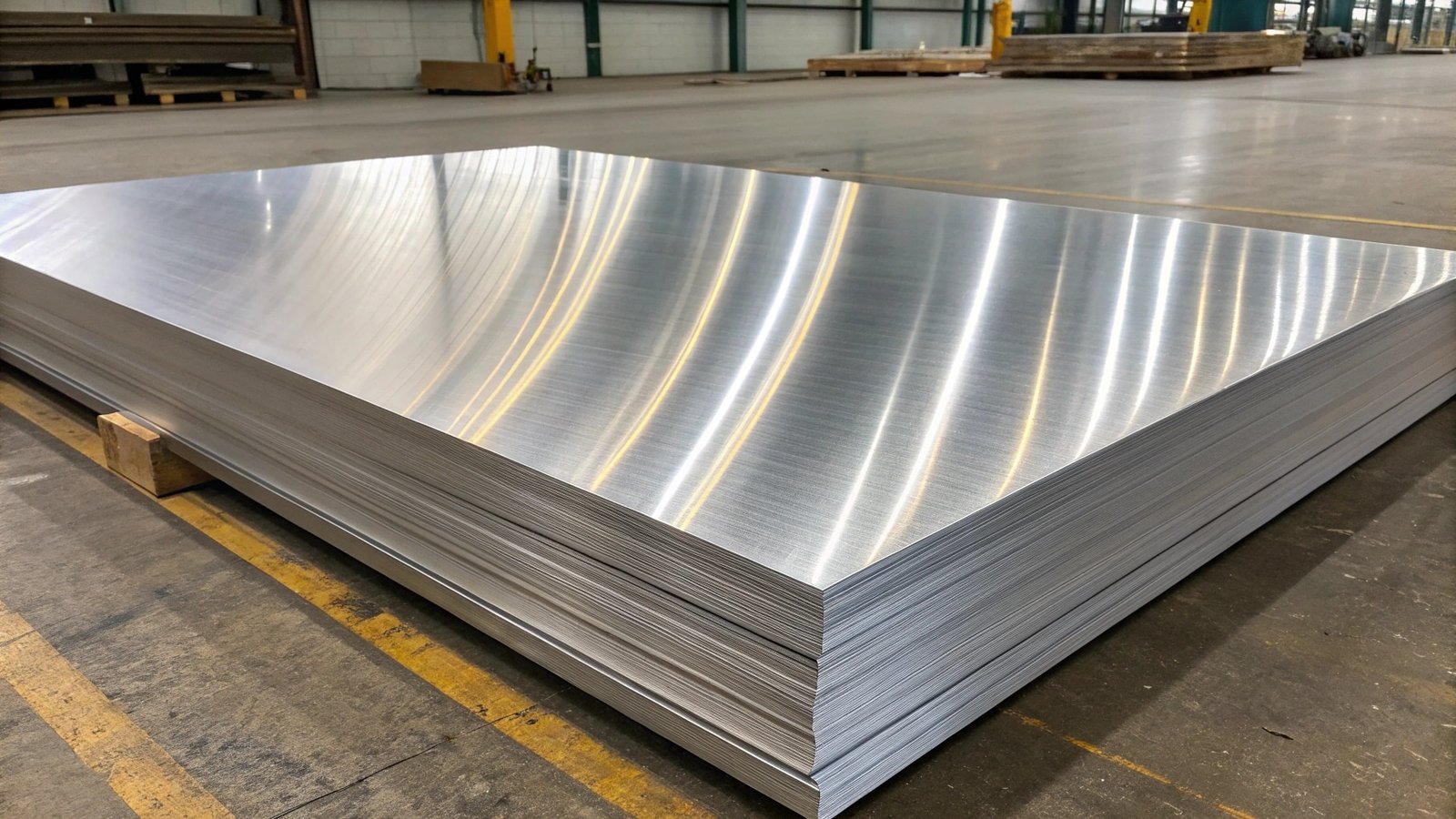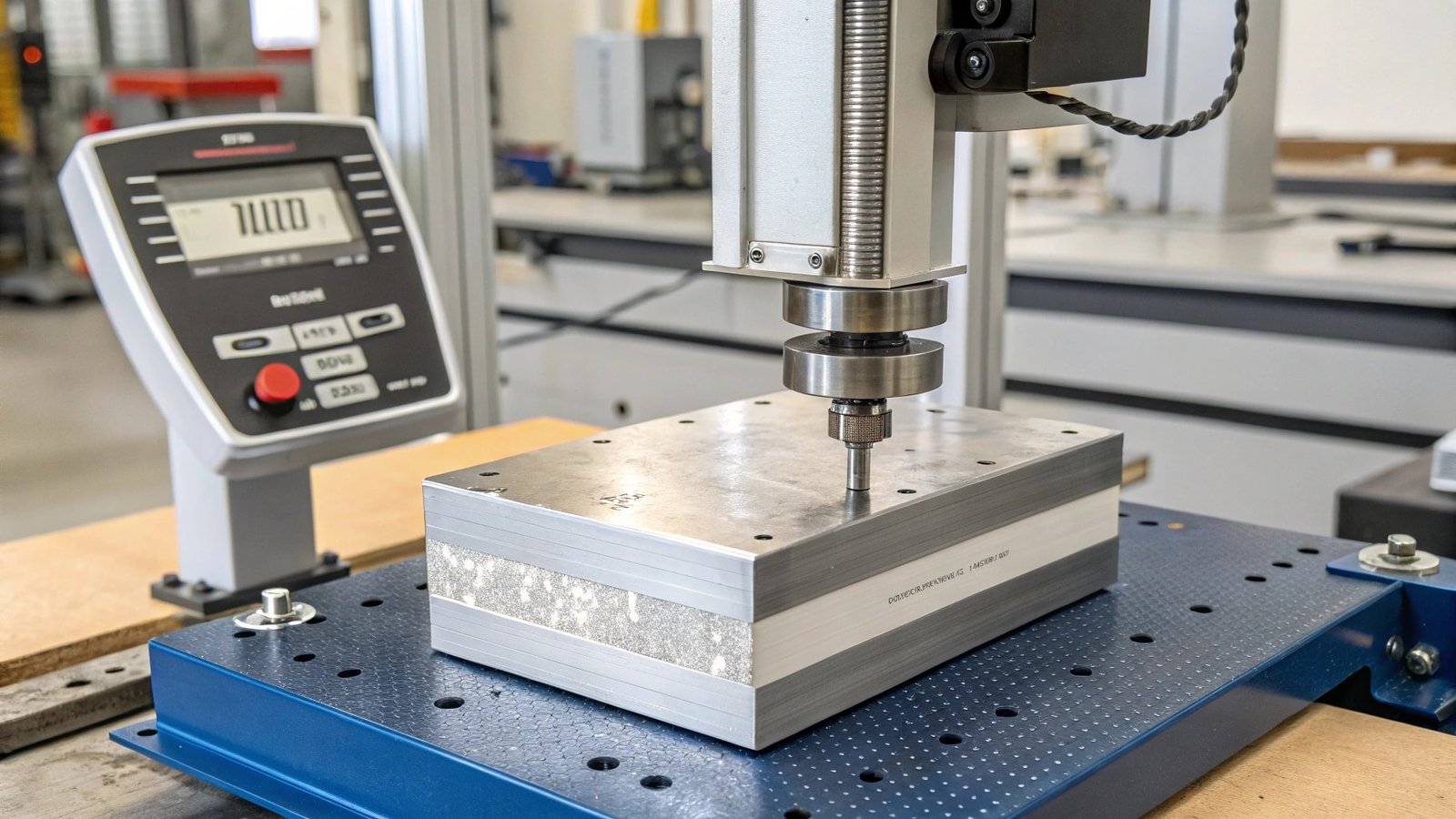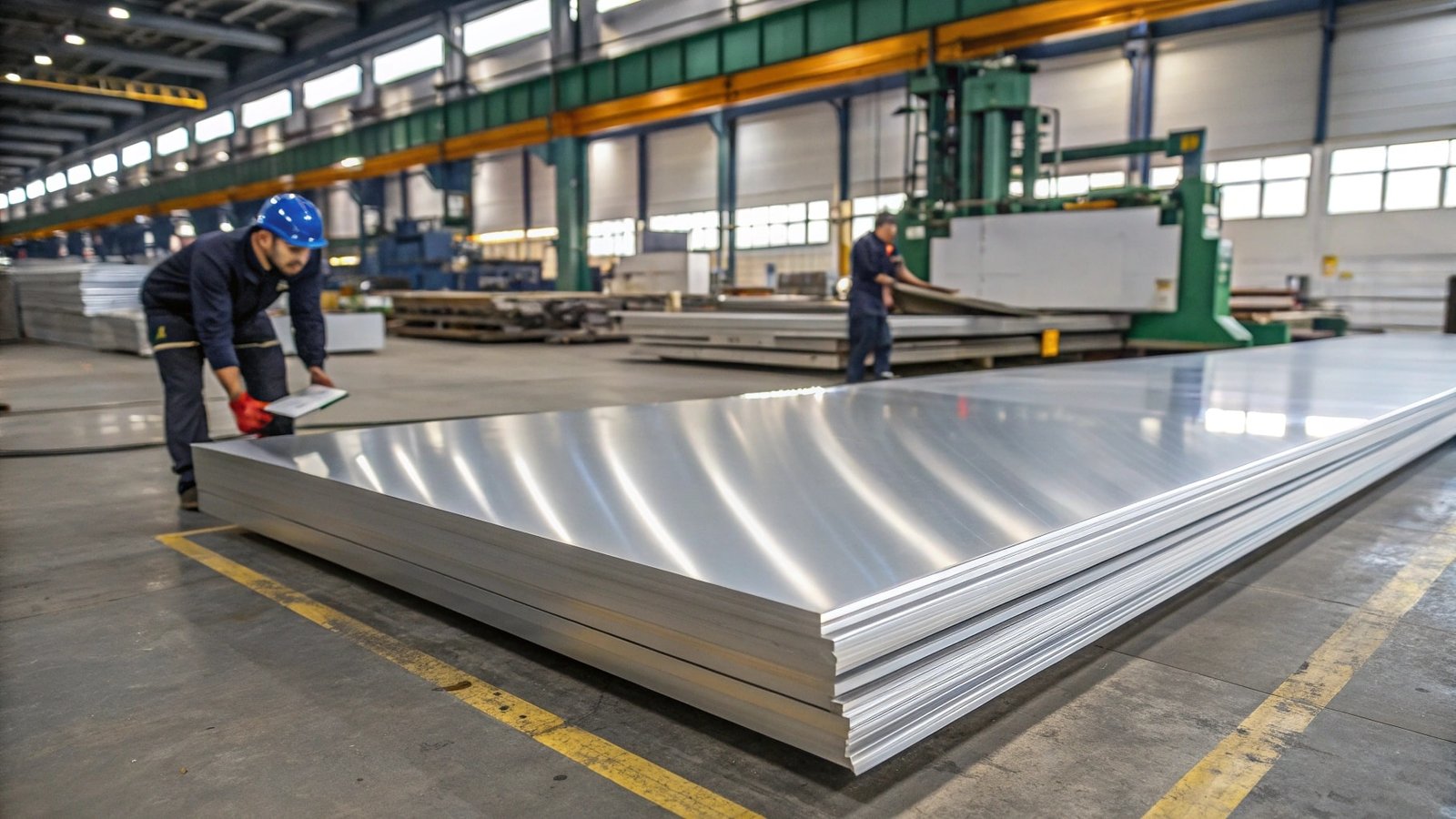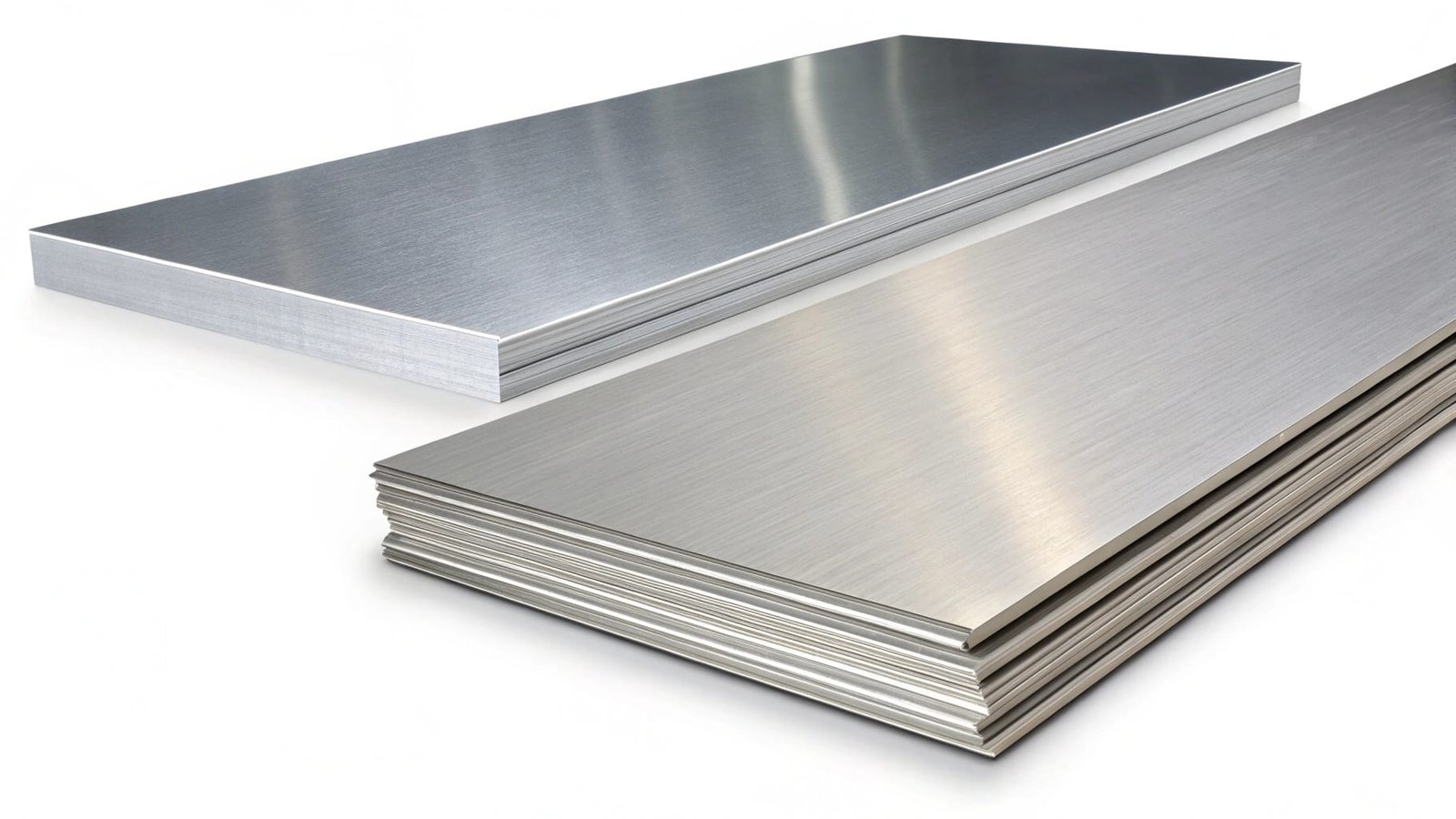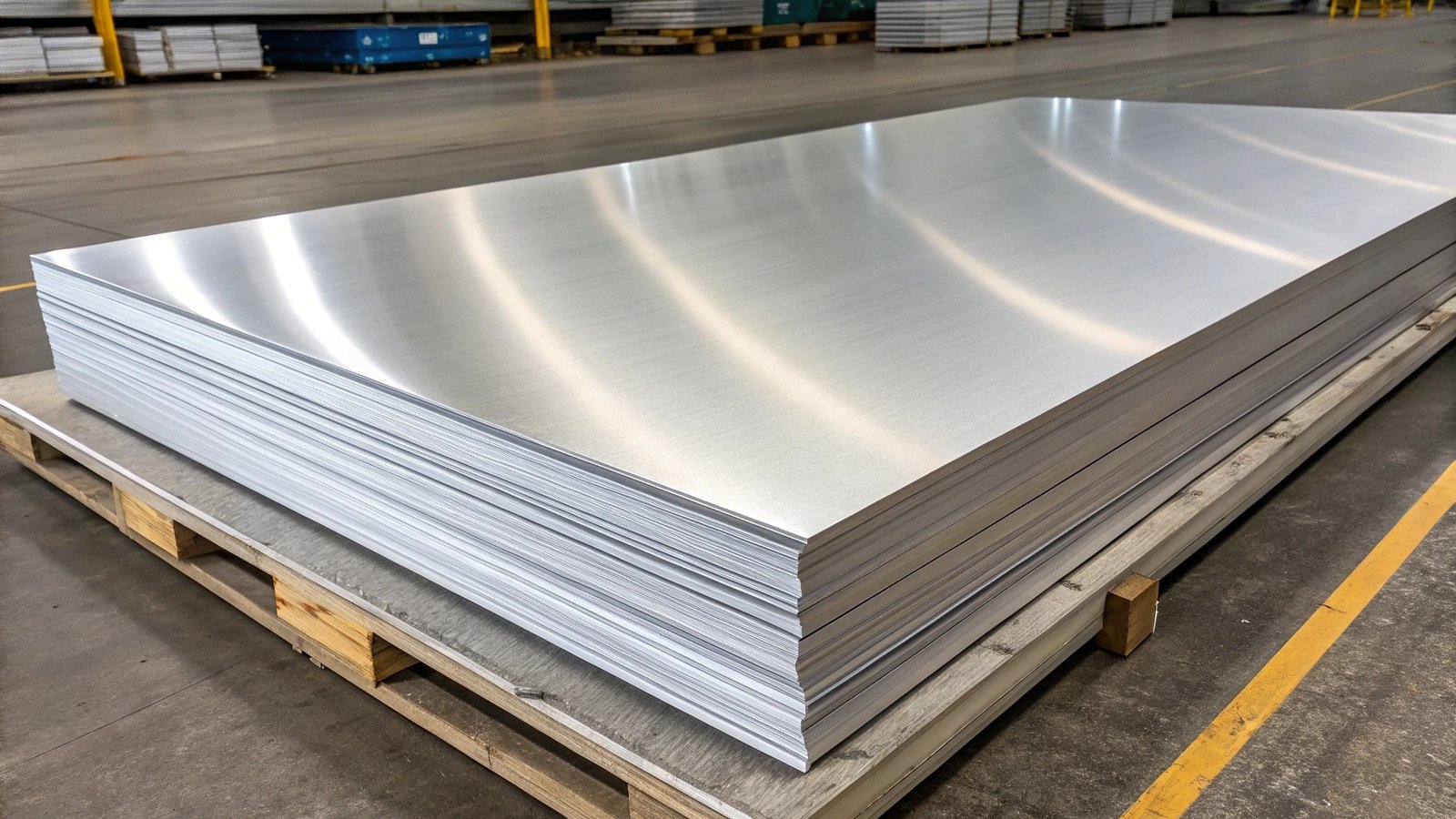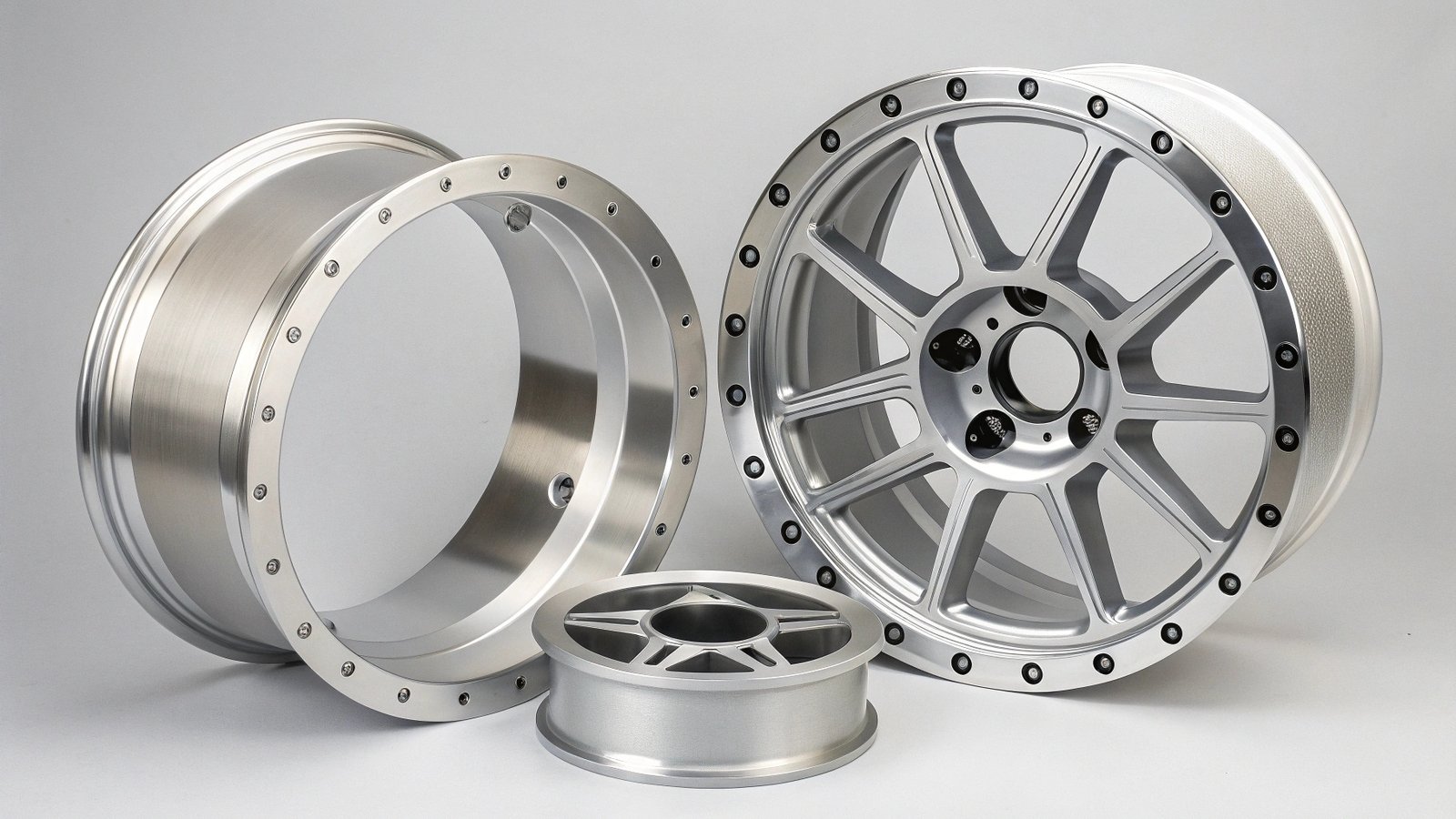Struggling to understand aluminum alloys1? Their complexity can be confusing. This can lead to wrong material choices for your projects. We can clarify this complex topic for you.
Aluminum alloys are metals made by mixing aluminum with other elements. This mixing creates materials with enhanced properties like strength, hardness, or corrosion resistance, much better than pure aluminum for many uses.
At SWA Forging, we've been working with aluminum alloys since we started in 2012. Based in Suzhou, China, we manufacture and export custom aluminum alloy solutions. Our specialties are large-diameter forged rings and forged discs. Our clients, mainly traders and machining companies in the Middle East, often ask us for details about these materials. They need to know they are choosing the best option for their specific needs, like for automotive or aerospace parts. Understanding aluminum alloys is key to making informed decisions. It ensures that the final product will perform as expected. Let's explore what makes these materials so special and useful.
What is the general knowledge of aluminium?
Pure aluminum seems simple. But its basic properties are key to understanding why we even create alloys. Let's explore these fundamentals before diving into alloys.
Aluminum is a lightweight, silvery-white metal. It's known for good electrical and thermal conductivity. It also has high reflectivity and excellent corrosion resistance2 due to a natural protective oxide layer.
Before we talk about aluminum alloys, it is important to understand pure aluminum itself. Aluminum is a remarkable metal. It has a unique set of characteristics that make it valuable on its own. These basic properties are the foundation upon which aluminum alloys are built. As a manufacturer of specialized aluminum components like forged rings and discs, we at SWA Forging always start with a deep understanding of this base metal.
Key Properties of Pure Aluminum
Pure aluminum, often found in the 1xxx series (meaning it's at least 99% pure aluminum), has several standout features.
- Lightweight: Aluminum has a density of about 2.7 grams per cubic centimeter. This is roughly one-third the density of steel. This low weight is a huge advantage in many applications, especially in transportation where less weight means better fuel efficiency.
- Corrosion Resistance: One of aluminum's most valued properties is its excellent resistance to corrosion. When aluminum is exposed to air, it quickly forms a thin, tough, and transparent layer of aluminum oxide on its surface. This layer protects the metal underneath from further oxidation and attack by many chemicals.
- Conductivity: Aluminum is a very good conductor of both electricity and heat. While not as conductive as copper by volume, it is more conductive per unit of weight. This makes it ideal for overhead power lines and for heat sinks in electronic devices.
- Ductility and Malleability: Pure aluminum is quite soft and easy to work with. It can be easily rolled into thin sheets, drawn into wires, or extruded into complex shapes. This formability is a big plus in manufacturing.
- Reflectivity: Aluminum is highly reflective, especially to visible light and radiant heat. This makes it useful for mirrors, light fixtures, and reflective insulation.
- Non-toxic and Recyclable: Aluminum is non-toxic and is widely used in food packaging. It is also 100% recyclable without any loss of its natural qualities, making it an environmentally friendly choice.
Limitations of Pure Aluminum
Despite its many advantages, pure aluminum has some limitations. Its main drawback is its relatively low strength and hardness compared to many other metals, especially steel. It also doesn't have great wear resistance on its own. For these reasons, pure aluminum is not suitable for structural applications or parts that need to withstand high stresses or abrasion. This is exactly why we create aluminum alloys – to enhance these properties.
What is the description of aluminum alloy?
"Alloy" sounds technical. It can be hard to grasp what it really means for aluminum. We make this clear for you, explaining how we enhance aluminum.
An aluminum alloy is a material where aluminum is the main metal. Other elements like copper, magnesium, silicon, manganese, or zinc are added to improve specific properties for various applications.
We've seen that pure aluminum has many good qualities. But for many jobs, especially those needing high strength or specific resistances, pure aluminum just isn't strong enough or suitable. This is where aluminum alloys come into play. At SWA Forging, we specialize in producing customized aluminum alloy solutions, such as our large-diameter forged rings and discs, to meet these demanding requirements.
Why Alloy Aluminum?
The main reason we create aluminum alloys is to improve upon the natural properties of pure aluminum. By carefully adding small amounts of other elements, we can significantly change how the aluminum behaves.
- Enhancing Mechanical Properties: This is the most common reason. Alloying can greatly increase aluminum's strength, hardness, and toughness. It can also improve its ability to withstand repeated stress (fatigue resistance). For example, adding elements like copper or zinc can make aluminum alloys as strong as some steels, but much lighter.
- Improving Specific Characteristics: Alloying can also tailor aluminum for specific working conditions or manufacturing processes. Some elements can improve how well aluminum can be machined, making it easier to cut and shape. Others can enhance its corrosion resistance in specific environments, like seawater. Some additions can make it easier to weld.
- Tailoring for Applications: The beauty of alloying is that we can create a huge range of materials. Each is designed for specific uses. An alloy for an aircraft wing will be very different from an alloy used for a boat hull or a car engine block.
The Alloying Process
Making an aluminum alloy involves melting pure aluminum and then precisely mixing in the desired alloying elements. These elements dissolve into the molten aluminum. Once the mixture is uniform, it is then cast into various forms, like ingots or billets. These can then be further processed by rolling, extruding, or forging, which is our specialty at SWA Forging. The specific combination of elements and the way the alloy is processed (including heat treatments) determine its final properties.
Impact of Common Alloying Elements
Here's a look at what some common alloying elements do when added to aluminum:
| Alloying Element | Primary Effect(s) | Common Use Cases |
|---|---|---|
| Copper (Cu) | Increases strength and hardness, allows for heat treatment to further boost these properties. | Aerospace components, high-strength structural parts. We often forge these for demanding applications. |
| Silicon (Si) | Lowers the melting point and improves the fluidity of molten aluminum. This makes it easier to cast. | Casting alloys, welding filler wire, brazing materials. |
| Magnesium (Mg) | Increases strength through solid solution strengthening. It also improves corrosion resistance, especially in saltwater, and weldability. | Marine applications, architectural uses, beverage cans, structural components. |
| Manganese (Mn) | Increases strength slightly and improves how the material hardens when worked (strain hardening). | Beverage cans, cooking utensils, general-purpose sheet material. |
| Zinc (Zn) | When combined with magnesium, creates the highest strength aluminum alloys. These are also heat-treatable. | Aerospace structures, military applications, high-stress parts. Our forged discs often use these high-strength alloys. |
By understanding these effects, we at SWA Forging can help our clients, whether they are traders or machining companies, select or develop the perfect aluminum alloy for their large-diameter forged rings and discs. This ensures they get the performance they need.
What is the important alloy of aluminium?
So many aluminum alloys exist. Which ones are truly important for industry? It can be overwhelming to choose the right one for your needs.
Important aluminum alloys include the 6000 series3 (like 6061) for general purposes and structural use. The 7000 series4 (like 7075) is crucial for high-strength aerospace applications.
With hundreds of aluminum alloys available, it can seem difficult to know which ones are most significant. However, a few families or specific alloys stand out. They are widely used across many industries because of their excellent balance of properties or their outstanding performance in specific areas. As a manufacturer specializing in customized aluminum alloy solutions like forged rings and discs, we at SWA Forging work with many of these important alloys every day.
Focus on Key Alloy Series
Here are some of the most important groups of aluminum alloys:
- 6xxx Series (Aluminum-Magnesium-Silicon):
- Characteristics: This series is known for its good strength, excellent corrosion resistance, good formability, and weldability. These alloys are also heat-treatable, which means their strength can be significantly increased after forming.
- Example: 6061 Alloy. This is perhaps the most versatile and widely used aluminum alloy. You can find it in everything from bicycle frames and architectural structures to scuba tanks and fishing reels. Many of our general-purpose forged rings are made from 6061 or similar alloys due to their great all-around performance and cost-effectiveness.
- Why it's important: The 6xxx series offers a fantastic combination of properties that make it suitable for a huge range of structural and general engineering applications.
- 7xxx Series (Aluminum-Zinc-Magnesium-(Copper)):
- Characteristics: Alloys in this series are the strongest aluminum alloys available. They achieve their very high strength through heat treatment. While their corrosion resistance can be lower than some other series if not properly managed, their strength-to-weight ratio is outstanding.
- Example: 7075 Alloy. This is a classic high-strength aerospace alloy. It's used for aircraft structures, military equipment, and high-performance sporting goods like rock climbing gear. Forging 7075 into large discs for critical aerospace or industrial machinery components is a common request we handle.
- Why it's important: When maximum strength and light weight are absolutely critical, the 7xxx series is often the top choice.
- 5xxx Series5 (Aluminum-Magnesium):
- Characteristics: These alloys offer excellent corrosion resistance, especially in marine environments (saltwater). They also have good weldability and moderate to high strength, which they gain from work hardening rather than heat treatment.
- Example: 5083 Alloy. This is a common choice for shipbuilding, boat hulls, pressure vessels, and truck bodies. Its ability to withstand harsh environments makes it very valuable.
- Why it's important: For applications where durability in corrosive conditions is paramount, the 5xxx series is a reliable performer.
At SWA Forging, our expertise lies in understanding which of these important alloys, or even more specialized ones, is best suited for our clients' needs. We provide product quality certificates for every order. We can also arrange third-party certifications like SGS, BV, and TUV reports, giving our customers full confidence in the material they receive.
How many types of aluminum alloy are there?
The number of aluminum alloys seems endless. How can anyone keep track of them all? We can simplify this classification system for you now.
There are hundreds of aluminum alloys. They are mainly grouped into series (1xxx to 8xxx) based on their main alloying elements. Each series offers distinct properties for different uses.
It is true that there are many, many different types of aluminum alloys. If you look at industry standards, you will find hundreds of registered compositions. This variety is actually a good thing. It means that engineers and designers can choose an alloy that is perfectly suited for a specific application. To make sense of all these alloys, they are organized into groups or series. At SWA Forging, we mainly work with wrought aluminum alloys, which are those designed to be shaped by processes like rolling, extrusion, or forging, our specialty for large-diameter rings and discs.
The Wrought Aluminum Alloy Designation System
Wrought aluminum alloys are identified by a four-digit number. This system, managed by The Aluminum Association, provides a lot of information about the alloy:
- First digit (Xxxx): This number indicates the principal alloying element or group of elements. This is the most important classifier.
- Second digit (xXxx): If this digit is not zero, it indicates a modification of the original alloy.
- Third and Fourth digits (xxXX): These digits usually identify the specific alloy within the series. For the 1xxx series (pure aluminum), these last two digits indicate the minimum aluminum percentage above 99%. For other series, they are arbitrary numbers assigned to specific compositions.
Here’s a table summarizing the main wrought alloy series:
| Series | Principal Alloying Element(s) | Key Characteristics | Common Applications |
|---|---|---|---|
| 1xxx | 99.00% min Aluminum | Excellent corrosion resistance, high conductivity, very soft and ductile | Electrical conductors, chemical equipment, food packaging, reflectors |
| 2xxx | Copper (Cu) | High strength, heat-treatable. Can have lower corrosion resistance if not protected. | Aerospace structures, aircraft fittings, truck wheels. We forge 2xxx series alloys for high-strength needs. |
| 3xxx | Manganese (Mn) | Moderate strength, good formability, good corrosion resistance. Generally not heat-treatable. | Beverage cans, cooking utensils, heat exchangers, roofing. |
| 4xxx | Silicon (Si) | Lower melting point, improved fluidity in molten state. Often used for welding and brazing. | Welding wire, brazing sheet, some architectural castings (though mostly wrought). |
| 5xxx | Magnesium (Mg) | Good weldability, excellent corrosion resistance (especially in marine environments), moderate to high strength (work-hardenable). | Marine applications, boat hulls, pressure vessels, automotive components, architectural panels. |
| 6xxx | Magnesium (Mg) & Silicon (Si) | Good strength, formability, weldability, and corrosion resistance. Heat-treatable. | Structural components, architectural extrusions, automotive parts, bicycle frames. Our forged rings and discs often come from this versatile series. |
| 7xxx | Zinc (Zn) | Very high strength (highest of all aluminum alloys), heat-treatable. | Aerospace structures, high-stress applications, military equipment, sporting goods. We are experts in forging 7xxx series alloys. |
| 8xxx | Other elements (e.g., Lithium, Tin) | Specialized properties tailored for specific advanced applications. | Bearings, some aerospace alloys with specific stiffness or density requirements. |
Cast Alloys
It's worth noting that there is also a separate designation system for cast aluminum alloys (e.g., A356.0, 380.0). These are designed to be shaped by pouring molten metal into molds. While we at SWA Forging focus on wrought alloys for our forged products, it's good to know that cast alloys also offer a wide range of properties for different manufacturing needs.
Our primary focus at SWA Forging is on providing customized solutions using wrought aluminum alloys suitable for forging. This includes many alloys from the 2xxx, 5xxx, 6xxx, and 7xxx series. We help our clients, whether they are traders distributing materials or machining companies creating final parts, navigate these types to select the best option for their large-diameter forged rings and discs. Our commitment to quality is backed by ISO9001, ISO14001, and ISO45001 certifications.
Conclusion
Aluminum alloys offer enhanced properties over pure aluminum. Their diverse types are classified by series, each suited for specific industrial and high-tech applications, making them highly versatile.
-
Understanding aluminum alloys is crucial for selecting the right materials for your projects, ensuring optimal performance and durability. ↩
-
Learning about aluminum's corrosion resistance can guide you in choosing materials that will last longer in challenging environments. ↩
-
Explore this link to understand the diverse applications and benefits of the 6000 series aluminum alloys, crucial for various industries. ↩
-
Discover why the 7000 series is vital for aerospace and high-strength applications, ensuring safety and performance in critical structures. ↩
-
Learn about the exceptional corrosion resistance of the 5xxx series, making it ideal for marine applications and ensuring durability. ↩





